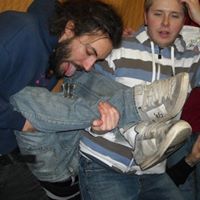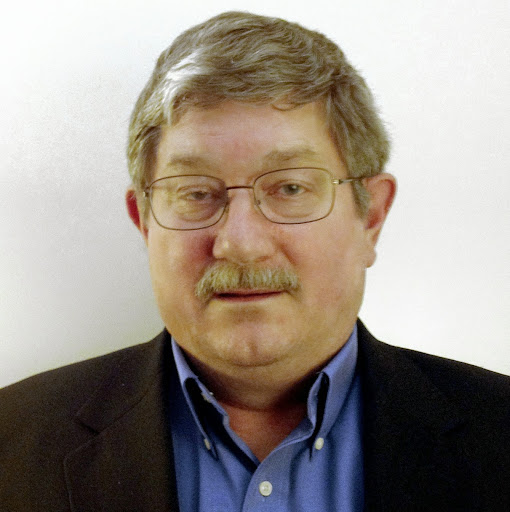Steven Craig Swanson
age ~72
from Penn Valley, CA
- Also known as:
-
- Steven C Swanson
- Steve C Swanson
- Steven C Swenson
Steven Swanson Phones & Addresses
- Penn Valley, CA
- Grass Valley, CA
- Nevis, MN
- 3537 Gulfstream St, Pleasanton, CA 94588 • (925)2490001
- Issaquah, WA
- Alameda, CA
- Hidden Valley Lake, CA
- Lake La, CA
- Mission Viejo, CA
- 3537 Gulfstream St, Pleasanton, CA 94588
Work
-
Position:Private Household Service Occupations
Education
-
Degree:Associate degree or higher
Us Patents
-
Building A Wavecache
view source -
US Patent:7490218, Feb 10, 2009
-
Filed:Nov 22, 2005
-
Appl. No.:11/284760
-
Inventors:Susan Jane Eggers - Seattle WA, US
Martha Allen Mercaldi - Seattle WA, US
Kenneth Alan Michelson - New York NY, US
Mark Henry Oskin - Seattle WA, US
Andrew Kinoshita Petersen - Seattle WA, US
Andrew Richard Putnam - Seattle WA, US
Andrew Michalski Schwerin - Seattle WA, US
Steven James Swanson - Seattle WA, US -
Assignee:University of Washington - Seattle WA
-
International Classification:G06F 15/00
G06F 15/76 -
US Classification:712 25
-
Abstract:A microarchitecture and instruction set that supports multiple, simultaneously executing threads. The approach is disclosed in regard to its applicability in connection with a recently developed microarchitecture called “WaveScalar. ” WaveScalar is a compiler that breaks a control flow graph for a program into pieces called waves having instructions that are partially ordered (i. e. , a wave contains no back-edges), and for which control enters at a single point. Certain aspects of the present approach are also generally applicable to executing multiple threads on a more conventional microarchitecture. In one aspect of this approach, instructions are provided that enable and disable wave-ordered memory. Additional memory access instructions bypass wave-ordered memory, exposing additional parallelism. Also, a lightweight, interthread synchronization is employed that models hardware queue locks.
-
Wavescalar Architecture Having A Wave Order Memory
view source -
US Patent:7657882, Feb 2, 2010
-
Filed:Jan 21, 2005
-
Appl. No.:11/041396
-
Inventors:Mark H. Oskin - Seattle WA, US
Steven J. Swanson - Seattle WA, US
Susan J. Eggers - Seattle WA, US -
Assignee:University of Washington - Seattle WA
-
International Classification:G06F 9/45
-
US Classification:717156, 717149, 717155, 717161, 712 25, 712201
-
Abstract:A dataflow instruction set architecture and execution model, referred to as WaveScalar, which is designed for scalable, low-complexity/high-performance processors, while efficiently providing traditional memory semantics through a mechanism called wave-ordered memory. Wave-ordered memory enables “real-world” programs, written in any language, to be run on the WaveScalar architecture, as well as any out-of-order execution unit. Because it is software-controlled, wave-ordered memory can be disabled to obtain greater parallelism. Wavescalar also includes a software-controlled tag management system.
-
Wavescalar Architecture Having A Wave Order Memory
view source -
US Patent:8612955, Dec 17, 2013
-
Filed:Jan 22, 2008
-
Appl. No.:12/017480
-
Inventors:Mark H. Oskin - Seattle WA, US
Steven J. Swanson - Seattle WA, US
Susan J. Eggers - Seattle WA, US -
Assignee:University of Washington - Seattle WA
-
International Classification:G06F 9/45
-
US Classification:717156, 717149, 717155, 717161, 712 25, 712201
-
Abstract:A dataflow instruction set architecture and execution model, referred to as WaveScalar, which is designed for scalable, low-complexity/high-performance processors, while efficiently providing traditional memory semantics through a mechanism called wave-ordered memory. Wave-ordered memory enables “real-world” programs, written in any language, to be run on the WaveScalar architecture, as well as any out-of-order execution unit. Because it is software-controlled, wave-ordered memory can be disabled to obtain greater parallelism. Wavescalar also includes a software-controlled tag management system.
-
Portable Memory Device
view source -
US Patent:20030115415, Jun 19, 2003
-
Filed:Dec 18, 2001
-
Appl. No.:10/025266
-
Inventors:Roy Want - Los Altos CA, US
James Kardach - Saratoga CA, US
Graham Kirby - San Jose CA, US
Trevor Pering - Mountain View CA, US
Steven Swanson - Seattle WA, US -
International Classification:G06F012/00
G06F012/14 -
US Classification:711/115000
-
Abstract:A method and device is provided for communicating with an access device. The device includes a wireless communications module to communicate with the access device in a wireless fashion, a data storage module to store bulk data, and a controller connected to the communication module and to the data storage module. The controller controls storage of data in the data storage module and retrieval of data from the data storage module in response to requests from a user via the access device. The device may function as a personal server which, for example, communicates with an access device (e.g., PC, PDA, cellular telephone, or the like) using Bluetooth technology. As Bluetooth is a universally accepted communication standard, a variety of different access devices, or any one particular preferred interface, in proximity to the user may be used to define a personal computing environment.
-
Detection Of Compounds That Affect Therapeutic Activity
view source -
US Patent:20060211022, Sep 21, 2006
-
Filed:Feb 23, 2006
-
Appl. No.:11/361415
-
Inventors:Shuqian Jing - Palo Alto CA, US
Francesca Civoli - Newbury Park CA, US
Shalini Gupta - Newbury Park CA, US
Daniel Halperin - Calabasas CA, US
Jason Pennucci - Santa Monica CA, US
Steven Swanson - Moorpark CA, US
Yan Yu - Thousand Oaks CA, US -
Assignee:Amgen Inc. - Thousand Oaks CA
-
International Classification:C12Q 1/68
G01N 33/53 -
US Classification:435006000, 435007100
-
Abstract:The present invention relates to methods of detecting compounds that affect the activity of a therapeutic substance or composition administered to a subject, and to reagents for use in such methods.
-
Building A Wavecache
view source -
US Patent:20070271556, Nov 22, 2007
-
Filed:Jul 30, 2007
-
Appl. No.:11/830446
-
Inventors:Susan Eggers - Seattle WA, US
Martha Mercaldi - Seattle WA, US
Kenneth Michelson - New York NY, US
Mark Oskin - Seattle WA, US
Andrew Petersen - Seattle WA, US
Andrew Putnam - Seattle WA, US
Andrew Schwerin - Seattle WA, US
Steven Swanson - Seattle WA, US -
Assignee:University of Washington - Seattle WA
-
International Classification:G06F 9/45
-
US Classification:717151000
-
Abstract:A microarchitecture and instruction set that supports multiple, simultaneously executing threads. The approach is disclosed in regard to its applicability in connection with a recently developed microarchitecture called “WaveScalar.” WaveScalar is a compiler that breaks a control flow graph for a program into pieces called waves having instructions that are partially ordered (i.e., a wave contains no back-edges), and for which control enters at a single point. Certain aspects of the present approach are also generally applicable to executing multiple threads on a more conventional microarchitecture. In one aspect of this approach, instructions are provided that enable and disable wave-ordered memory. Additional memory access instructions bypass wave-ordered memory, exposing additional parallelism. Also, a lightweight, interthread synchronization is employed that models hardware queue locks. Finally, a simple fence instruction is used to allow applications to handle relaxed memory consistency.
Isbn (Books And Publications)

Lawyers & Attorneys

Steven Swanson - Lawyer
view sourceSpecialties:
Probate
Estate Planning
Real Estate
Business
Landlord & Tenant
Guardianship
Estate Planning
Real Estate
Business
Landlord & Tenant
Guardianship
ISLN:
903294537
Admitted:
1976
University:
University of Iowa, B.A., 1973; University of Iowa, M.A., 1976
Law School:
University of Iowa, J.D., 1976

Steven Swanson - Lawyer
view sourceSpecialties:
Intellectual Property
Products Liability
Transportation
Products Liability
Transportation
ISLN:
924575004
Admitted:
2015
University:
University of California, B.A.
Law School:
University of California School of Law, J.D.

Steven J. Swanson - Lawyer
view sourceOffice:
Swanson Law Office
Specialties:
General Practice
ISLN:
903294544
Admitted:
1978
University:
University of Minnesota, B.S.
Law School:
Hamline University, J.D.
Name / Title
Company / Classification
Phones & Addresses
Director of Operations
HairMasters
BoRics. Cost Cutters. Famous Hair. First Choice Haircutters. Holiday Hair. MasterCuts. Regis Corporation. SmartStyle. SuperCuts. SuperHair 12. Trade Secret
Beauty Salons. Hair Styling and Services. Barbers
BoRics. Cost Cutters. Famous Hair. First Choice Haircutters. Holiday Hair. MasterCuts. Regis Corporation. SmartStyle. SuperCuts. SuperHair 12. Trade Secret
Beauty Salons. Hair Styling and Services. Barbers
9027 25th Ave SW, Westwood Town Center, Seattle, WA 98106-0908
(206)9379400, (952)9953450
(206)9379400, (952)9953450
President
Pool Company the
Special Trade Contractors
Special Trade Contractors
Po Box 887, Clayton, CA 94517
Manager
California Institute
Colleges, Universities, and Professional Scho...
Colleges, Universities, and Professional Scho...
1453 Mission St Fl 4, San Francisco, CA 94103
Coldwell Banker Danforth
Real Estate Agents and Managers
Real Estate Agents and Managers
2111 N Northgate Way Ste 101, Seattle, WA 98133
Chief Executive
Steven Swanson
Legal Services
Legal Services
5000 22Nd Ave Ne #310, Seattle, WA 98104
President
The Pool Company
Trade Contractor · Pool Cleaners
Trade Contractor · Pool Cleaners
291 Rickenbacker Cir, Livermore, CA 94551
Clayton, CA 94517
PO Box 887, Clayton, CA 94517
(925)6727445, (925)2501960
Clayton, CA 94517
PO Box 887, Clayton, CA 94517
(925)6727445, (925)2501960
Principal
S & B Pretzel, Inc
Whol Confectionery
Whol Confectionery
1643 10 St SW, Mason City, IA 50401
PO Box 685, Wilkinson, MN 56633
PO Box 685, Wilkinson, MN 56633
Treasurer, Secretary
SWANSON & SONS, INC
Repair Services Wholesales Hardware
Repair Services Wholesales Hardware
2101 Del Paso Blvd, Sacramento, CA 95815
3905 N Lakeshore Blvd, Loomis, CA 95650
(916)9226556
3905 N Lakeshore Blvd, Loomis, CA 95650
(916)9226556
Resumes

Steven Swanson
view source
Steven Swanson
view source
Steven Swanson
view source
Steven Swanson
view source
Steven Swanson Las Vegas, NV
view sourceWork:
Nevada Railroad Materials
Tucson, AZ
2012 to 2014 On Demand Sedan Limousine, Inc
Las Vegas, NV
2011 to 2012 George & Dragon Bar/Restaurant
2008 to 2010 Sterling Rope Company, Inc
Biddeford, ME
2007 to 2008 Aube-Plamondon Electric / Poirier Electric
2003 to 2007 IBEW/ JATC
Martinez, CA
1996 to 2003
Union Electrician Aerotest Operations, Inc
San Ramon, CA
1995 to 1996 American Protective Services
Walnut Creek, CA
1993 to 1995 United States Air Force
1983 to 1992
Shift Supervisor
Tucson, AZ
2012 to 2014 On Demand Sedan Limousine, Inc
Las Vegas, NV
2011 to 2012 George & Dragon Bar/Restaurant
2008 to 2010 Sterling Rope Company, Inc
Biddeford, ME
2007 to 2008 Aube-Plamondon Electric / Poirier Electric
2003 to 2007 IBEW/ JATC
Martinez, CA
1996 to 2003
Union Electrician Aerotest Operations, Inc
San Ramon, CA
1995 to 1996 American Protective Services
Walnut Creek, CA
1993 to 1995 United States Air Force
1983 to 1992
Shift Supervisor
Education:
Community College of the Air Force
Martinez, CA
1998 to 2003
Criminal Justice Iowa Lakes Community College
Emmetsburg, IA
1982 to 1983
Business Studies Rockwell City High School
Rockwell City, IA
1978 to 1982
High School Diploma
Martinez, CA
1998 to 2003
Criminal Justice Iowa Lakes Community College
Emmetsburg, IA
1982 to 1983
Business Studies Rockwell City High School
Rockwell City, IA
1978 to 1982
High School Diploma

Steven Swanson Orlando, FL
view sourceWork:
Hewitt Associates
Orlando, FL
Feb 2008 to Jan 2011
Senior CSA Greenway Ford
Orlando, FL
Dec 2007 to Apr 2008
Sales Specialist Hilton Grand Vacations
Orlando, FL
Dec 2006 to Oct 2007
Recruiter Koons Ford
College Park, MD
May 2005 to May 2006
Inventory Manager HR SpecialistSeattle, WA
Sep 1991 to Apr 2005
Orlando, FL
Feb 2008 to Jan 2011
Senior CSA Greenway Ford
Orlando, FL
Dec 2007 to Apr 2008
Sales Specialist Hilton Grand Vacations
Orlando, FL
Dec 2006 to Oct 2007
Recruiter Koons Ford
College Park, MD
May 2005 to May 2006
Inventory Manager HR SpecialistSeattle, WA
Sep 1991 to Apr 2005
Education:
Green River Community College
Auburn, WA
1986 to 1988
Associates in Computer Science and Business Administration
Auburn, WA
1986 to 1988
Associates in Computer Science and Business Administration
Classmates

Steven Swanson
view sourceSchools:
Elizabeth Seton High School Bladensburg MD 1988-1992
Community:
J Burke

Steven Swanson
view sourceSchools:
St. Croix Falls High School St. Croix Falls WI 1967-1971
Community:
Cheryl Anderson, Judy Linder, Dominic Bryngelson

Steven Swanson
view sourceSchools:
Turner County High School Ashburn GA 1984-1988
Community:
Wylecia Trawick, William Wood, Rickey Luke, Jeri Hobbs

Steven Swanson
view sourceSchools:
Westmer High School Joy IL 1965-1969
Community:
Becky Fox, Michelle Lilly

Steven Swanson
view sourceSchools:
Robert Frost Elementary School Mt. Prospect IL 1972-1977, Dempster Junior High School Mt. Prospect IL 1977-1979, Rand Junior High School Arlington Heights IL 1979-1980
Community:
Michael Cozzarelli, William Brisker, Jeff Curtiss, Melanie Jessop

Steven Swanson
view sourceSchools:
Eugene Field Elementary School Park Ridge IL 1964-1968
Community:
Kari Hadley, Craig Miller, Gary Sheehan, Christine Sloper, Lee Carpenter, Thomas Wilke, Kimberly Graves, Jan Xelowski, Cyndie Graf, Wendy Miller, Nicki Galli, Robert Graf

Steven Mark Swanson
view source
Steven Everett Swanson
view source
Steven Eric Swanson
view source
Steven Swanson
view source
Steven Swanson
view source
Steven Swanson
view source
Steven Svenson Swanson
view source
Steven John Swanson
view sourceYoutube
Myspace
Googleplus

Steven Swanson
Lived:
Arcadia, CA
Bainbridge Island, WA
Andes, NY
Bainbridge Island, WA
Andes, NY
Work:
Oak Valley Center - Math Teacher (2012)
Education:
University of Edinburgh - Old Testament, University of Denver - Mathematics, Fuller Theological Seminary - Theological Studies

Steven Swanson
Work:
San Jose Workforce Skills Center - Chair, Board of Trustees (2008)
Education:
Moscow State University - Philosophy, Missouri State University - Philosophy, Murray State University - Philosophy
Tagline:
Just Chillin and trying to make it through the day.

Steven Swanson
Work:
Lena's Cafe and Confections - Executive Chef (2013)
Education:
Culinary Institute of America - Culinary Arts

Steven Swanson

Steven Swanson
Tagline:
Im 19, Centennial Class of 11'

Steven Swanson

Steven Swanson

Steven Swanson
Flickr
News

Wallops Island takes stock of damage after rocket explosion
view source- When Wiseman and former crewmate Steven Swanson, a NASA astronaut, appeared before the committee live from the space station in July, Edwards pledged to send some freeze-dried crab cakes to the station. The promise drew a smile and a fist pump from Wiseman, who is a commander in the U.S. Navy.
- Date: Oct 29, 2014
- Source: Google

ISS Crew Returns Safely to Earth
view source- A Russian Soyuz capsule carrying Oleg Artemiev, Alexander Skvortsov and Steven Swanson parachuted safely onto the steppe of Kazakhstan early Thursday morning, several hours after ending a nearly six-month mission aboard the ISS. They have been replaced by a new three-person crew, including Russian c
- Date: Sep 11, 2014
- Source: Google

International Space Station Astronauts Return To Earth After Record-Breaking ...
view source- "We did lots of cargo, we did lots of science" NASA station commander Steven Swanson said after his return to Earth. "We actually set the record for the number of hours of science in a week. We did a lot of maintenance, which is good and bad; I love doing maintenance, but it means things broke."
- Date: Sep 11, 2014
- Category: Sci/Tech
- Source: Google

Public Invited to Kennedy Space Centre to Celebrate 45th Anniversary of Moon ...
view source- The event at the Kennedy Space Centre will feature crew members of Apollo 11, namely Michael Collins, astronaut Jim Lovell and NASA administer Charles Bolden. Orbiting in their lab 260 miles above the Earth, Reid Wiseman and Steven Swanson will also take part in the event. It will air on Monday, Jul
- Date: Jul 18, 2014
- Category: Sci/Tech
- Source: Google

Public invited to celebrate 45th anniversary of first moon walk
view source- enter will feature Apollo 11 crewmembers Michael Collins, astronaut Jim Lovell, and NASA administer Charles Bolden. Orbiting in their lab 260 miles above Earth, Reid Wiseman and Steven Swanson, the current station commander, will also take part in the event, which will air on Monday, July 21 at 10 a.
- Date: Jul 17, 2014
- Source: Google

Commercial shipment arrives at space station
view source- A private cargo ship launched three days ago from Virginia arrived at the orbiting complex a little after 6:30 a.m. EDT. The stations commander, Steven Swanson, used a giant robot arm to grab onto the Cygnus capsule and its precious load as the craft zoomed 260 miles above northern Libya.
- Date: Jul 17, 2014
- Source: Google

Commercial shipment arrives at space station
view source- astern Shore of Virginia arrived at the orbiting complex a little after 6:30 a.m. EDT. The station's commander, Steven Swanson, used a giant robot arm to grab onto the Cygnus capsule and its precious load as the craft zoomed 260 miles above northern Libya; the vast expanse of sand provided a backdrop.
- Date: Jul 16, 2014
- Category: Sci/Tech
- Source: Google

Commercial shipment arrives at space station
view source- days ago from Virginia arrived at the orbiting complex a little after 6:30 a.m. EDT. The station's commander, Steven Swanson, used a giant robot arm to grab onto the Cygnus capsule and its precious load as the craft zoomed 260 miles above northern Libya; the vast expanse of sand provided a backdrop.
- Date: Jul 16, 2014
- Category: Sci/Tech
- Source: Google
Plaxo

Steven Swanson
view sourceNew York
Get Report for Steven Craig Swanson from Penn Valley, CA, age ~72





















